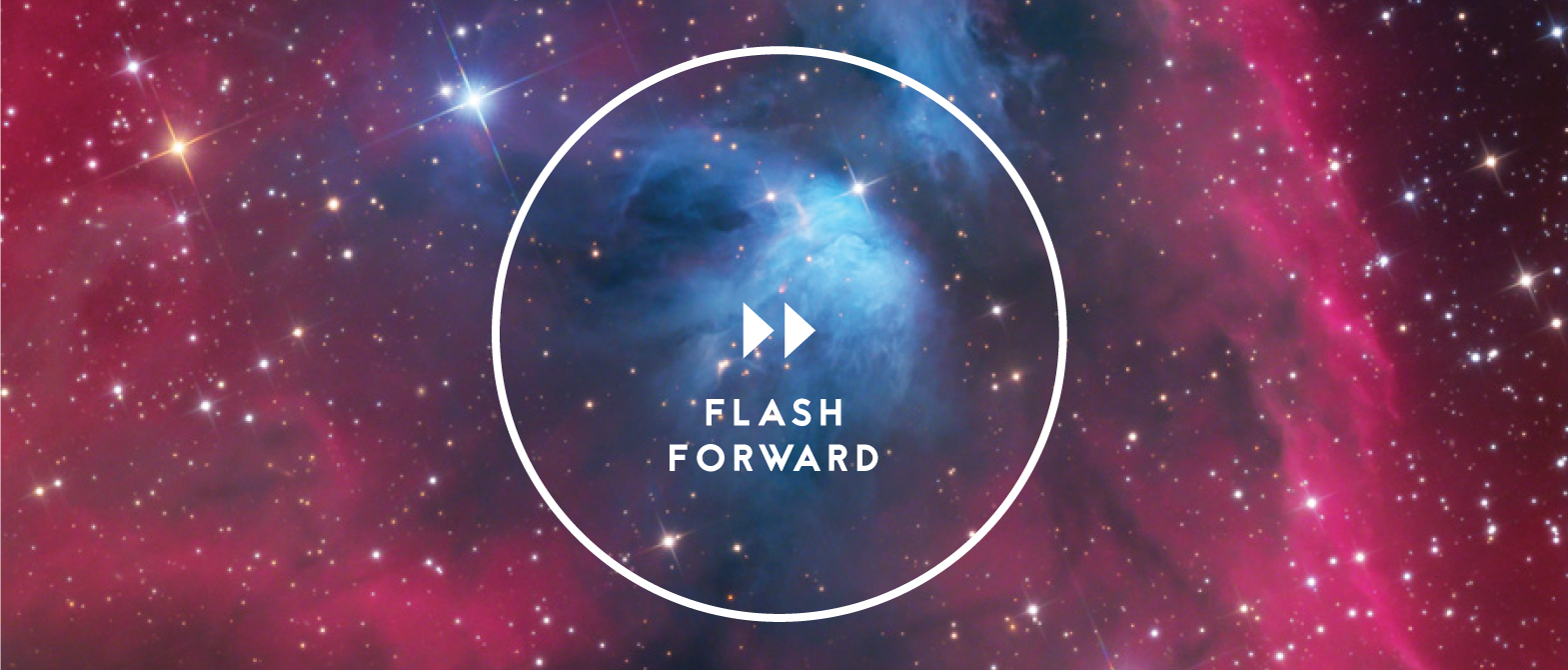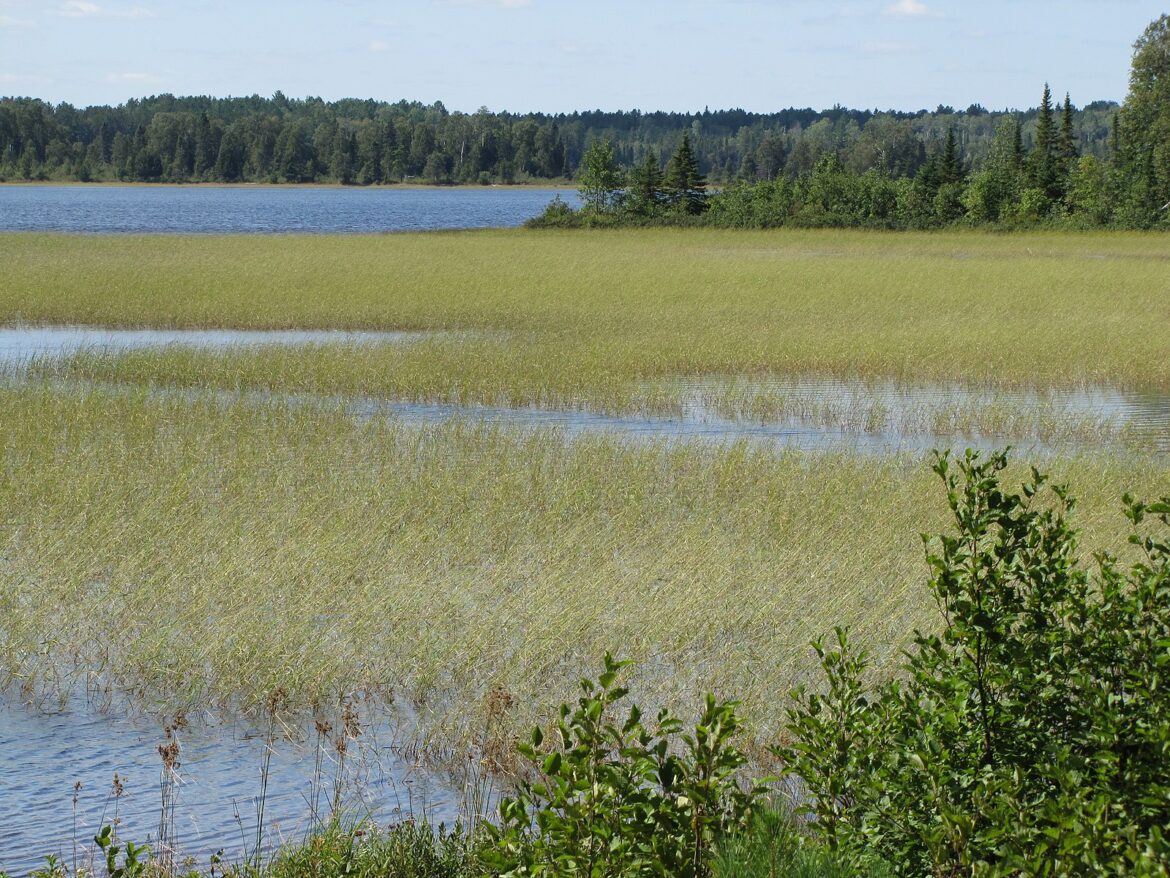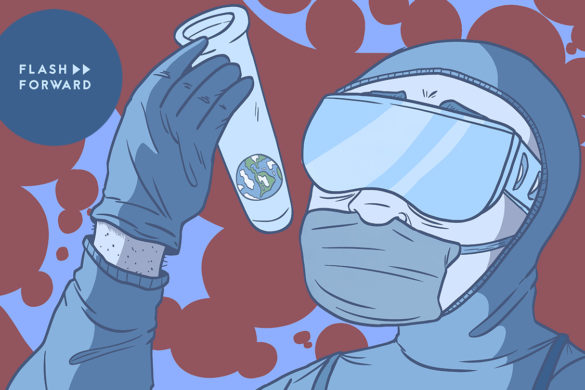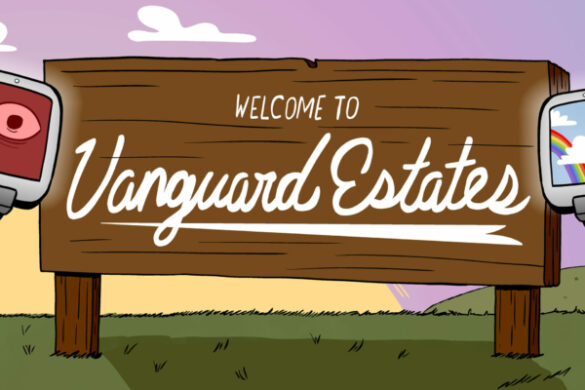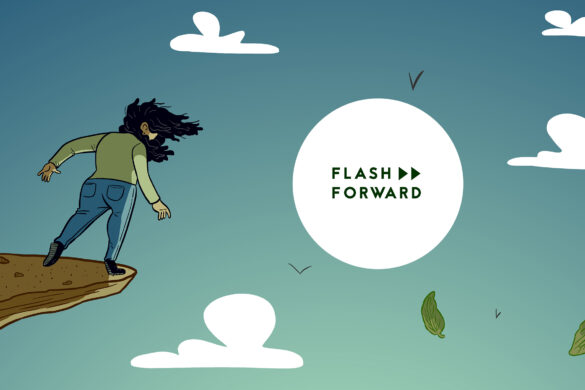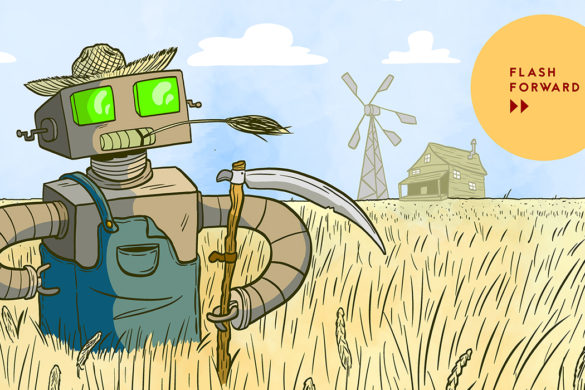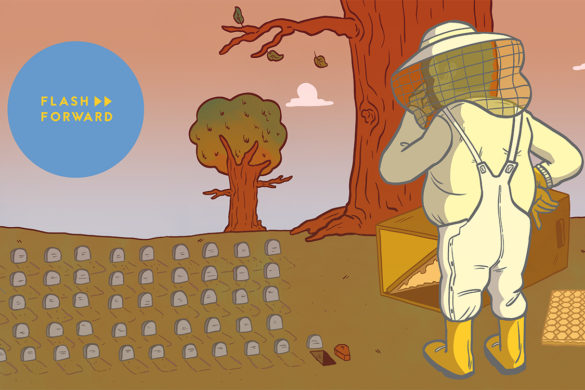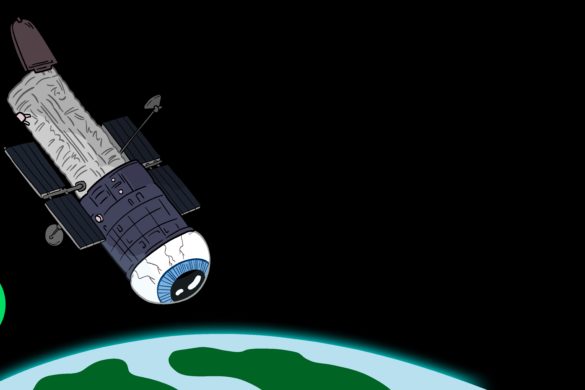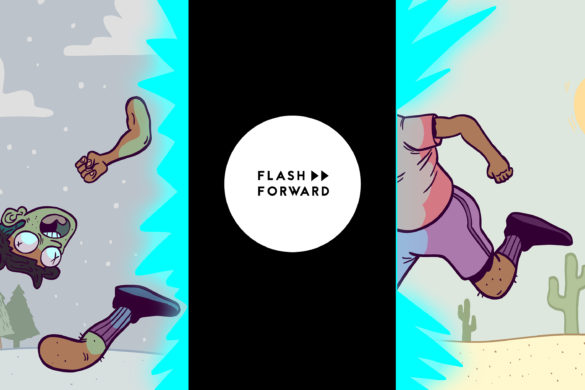Today we travel to a future where you can be sued by nature.
Guests:
- Evelyn Bellanger — White Earth Band of Ojibwe elder
- Frank Bibeau — tribal attorney and a member of the White Earth Band of Ojibwe
- Nico Albert — member of the Cherokee Nation and the executive chef of Burning Cedar Indigneous Foods
- Jacinta Ruru — professor of Law at the University of Otago in New Zealand
- Thomas Linzey — Senior Legal Counsel for the Center for Democratic and Environmental Rights
- Teresa Vicente Gimenez — professor of philosophy of law at the University of Murcia.
- Philomena Kebec — Indian law expert
LISTEN TO THE 99 PERCENT INVISIBLE EPISODE HERE
Special thanks to the Robert Wood Johnson Foundation for supporting this episode — check out the full 99 Percent Invisible series “The Future Of…” for more.
Further Reading:
- Environmental Personhood: Recent Developments and the Road Ahead
- Rights of Manoomin (Wild Rice)
- Rights of Nature Timeline (CDER)
- The Good Berry Cookbook: Harvesting and Cooking Wild Rice and Other Wild Foods
- Lake Eerie Bill of Rights
- Florida Judge Asked to Recognize the Legal Rights of Five Waterways Outside Orlando
- Polluted lagoon set to become first ecosystem in Europe with its own rights
- The Rights of Nature: Indigenous Philosophies Reframing Law
- The New Zealand river that became a legal person
- System Change and Non-Reformist Reforms
- Sauk-Suiattle Indian Tribe Brings First “Rights of Salmon” Case
Flash Forward is hosted by Rose Eveleth and produced by Julia Llinas Goodman. The intro music is by Asura and the outro music is by Hussalonia. The episode art is by Mattie Lubchansky. Amanda McLoughlin and Multitude Productions handle our ad sales. The 99 Percent Invisible invisible episode was hosted by Roman Mars, and edited by Delaney Hall. Fact checking by Graham Hacia. Mix and tech production by Ameeta Ganatra. Music by director of sound Swan Real. Special thanks this week to Leah Lemm, Dan Roberts, and Tashia Hart.
FULL TRANSCRIPT BELOW
(Transcription by Emily White at The Wordary)
▹▹ ▹▹ ▹▹ ▹▹ ▹▹ ▹▹ ▹▹ ▹▹ ▹▹ ▹▹ ▹▹ ▹▹ ▹▹ ▹▹ ▹▹ ▹▹ ▹▹ ▹▹ ▹▹ ▹▹ ▹▹ ▹▹ ▹▹
FLASH FORWARD
“Can You Be Sued By A River?”
ROSE EVELETH:
Hi everyone! Rose here, and before we get to today’s episode I am popping in with a quick exciting announcement. For a lot of last year, Ozzy Llinas Goodman I worked with The Verge to develop a television show about the future! And today, the day that this episode is in your feed, June 28th, 2022, you can watch all 12 episodes of that television show. It’s called The Future Of, it’s on Netflix, I think in basically every country at this point. And I do hope you check it out! Supporters got a behind-the-scenes look at the show on the bonus podcast last week, so if you are curious what it is like to make a television show, you can check that out.
But yeah, please do take a look. We worked really hard on it. I think it’s really fun, and it’s hopeful, and it’s full of interesting, weird ideas. Plus, if you like this kind of thing, you get to see me ON CAMERA, which is rare because I tend to stay behind the mic, or behind the scenes. But there I am, on screen, doing weird things with my hands because I never know what to do with my hands during interviews. It’s called The Future Of, and it’s on Netflix. Go check it out. And with that, on with the show!
[Flash Forward intro music – “Whispering Through” by Asura, an electronic, rhythm-heavy piece]
ROSE:
Oh hello there, fair listeners! It is me, Rose, and we are here with a surprise episode! Ozzy and I are still working on the special project for this year, but we’re excited to bring you a special, bonus episode to tide you over for just a little bit longer.
Last year, Ozzy and I started looking into doing an episode about something called environmental personhood — this idea that a place could become classified as a legal person to protect it from pollution or damage. We started reporting the episode, we did some interviews, and then I happened to mention it to one of our dear friends over at 99% Invisible, the podcast, and they were really interested in this idea too. So we teamed up, and what you are about to hear is the episode that we made together, plus a couple of additional odds and ends that did not wind up in the 99PI episode. So, please do go check out the 99% Invisible version as well, because in their version you also get to hear me and Roman discuss him being sued by a river, hypothetically, which was very fun. You can find the episode in the 99 Percent Invisible feed to listen to that. I’ll link to it in the show notes as well.
And this is, sort of, our version. So, a couple of changes, a couple of additions. The Flash Forward version of the episode. So, without further ado, let’s get into it!
[organ notes and piano melody plays in background]
ROMAN MARS:
Two hours west of Duluth, there is a wide, shallow lake called Big Rice Lake. Every summer, once the ice has thawed, the surface of the lake is slowly breached by tall, green stalks that grow up and out of the water. By early fall, Big Rice Lake is dotted with canoes full of people there to harvest the grains from those plants. This is where the lake gets its name. These tall, unassuming stems are full of a very special ingredient; wild rice.
EVELYN BELLANGER:
My first time actually ricing, me and my sister took my grandma and my mother out on a lake. And we were going around in circles, and we were pointing, “I want to go over there! I want to go over there!”
ROMAN:
This is Evelyn Bellanger, an elder enrolled in the White Earth Band, which is the largest of the six bands that make up the Minnesota Chippewa tribe, also known as the Ojibwe people. Evelyn has always loved going out on Big Rice Lake to take part in the harvest.
EVELYN:
And it’s really quiet. You know, you’re not going fast, but you can hear when somebody pulls that rice. They’ve got a rhythm, and it goes swoosh-swoosh. You can just hear that rice falling in the bowl. The rhythm of it, the sound of it.
ROMAN:
But for the Ojibwe people, this wild rice isn’t just a food source. It’s a lot more.
EVELYN:
It was a gift to the Ojibwe people. It was a gift.
ROMAN:
The Ojibwe people didn’t always live in this part of the Midwest. They used to be based on the East Coast. Then, about a thousand years ago, their elders were visited by the first of seven prophets who guided them.
EVELYN:
We were told to move from the East Coast because, if we didn’t, we would be destroyed.
ROSE:
When you get a prophecy like that, you don’t generally ignore it. So they packed up and left, looking for a new home.
ROMAN:
That’s reporter Rose Eveleth, host of the podcast Flash Forward.
ROSE:
The prophecy said they’d know where to settle when they found the place:
EVELYN:
… where the food was on the water
ROMAN:
Where the food grows on the water.
ROMAN:
After centuries of moving around, they wound up in the Great Lakes, where they found exactly what they were looking for in the form of wild rice.
ROSE:
The Ojibwe name for this specific type of rice is manoomin, which translates to “the good berry.” The scientific name is Zizania palustris. It’s the only grain indigenous to North America. And while it might look and taste a lot like the rice that you might buy at the store, it’s actually not closely related to brown or white rice at all. For the Ojibwe people. gathering this sacred, prophesied rice is a ritual that carries with it a lot of significance. Not only is manoomin a food source, it’s also a way to connect with their ancestors and a crucial species in the ecosystem.
ROMAN:
But last year, manoomin took on a new role: Plaintiff in a court case. In August, the Minnesota Department of Natural Resources was sued by wild rice.
[quixotic bass notes play]
ROSE:
The case of Manoomin v Minnesota Department of Natural Resources alleges that the Minnesota DNR infringed on the wild rice’s right to live and thrive.
ROMAN:
But can wild rice sue a state agency? The short answer is, yes. This is the story about what might happen if the rice wins.
ROSE:
Manoomin used to grow wild all over the Great Lakes region. But its populations have declined significantly in the last 100 years due to development, pollution, and climate change. In order to grow properly, the rice needs clean, unpolluted water. But that’s harder and harder to come by these days.
FRANK BIBEAU:
And a lot of people lost the ability to go out and get either their seasonal harvest for their personal use and/or to make some money off of that.
ROSE:
That’s Frank Bibeau, a tribal attorney and a member of the White Earth Band of Ojibwe. Like Evelyn, he has a lifelong connection to the rice and early memories of gathering it.
FRANK:
I harvest wild rice. My dad harvested wild rice. My grandfather harvested wild rice. I’ve got the family canoe. I live on a reservation, and so we have this other obligation, I guess, is what I would call it.
ROMAN:
And Frank takes that obligation to protect the rice very, very seriously.
ROSE:
While there are a lot of things hurting manoomin, there’s one big, obvious threat at the moment. In 2014, a company named Enbridge proposed updating and replacing sections of a crude oil pipeline called Line 3 that goes through Minnesota. But local tribes and environmental activists had questions about just how safe this pipeline really was, and whether pumping more oil through their land was really a good idea.
[clip from PBS NEWSHOUR]
A pipeline battle brewing in Minnesota, today with the largest show of resistance yet. [Protestors chanting: Stop Line 3! Stop Line 3!]
ROMAN:
Activists tried all kinds of tactics to stop Line 3. They protested, and petitioned, and lobbied the various environmental agencies to step in.
[clip or protestor over loudspeaker]
“We will no longer stand for our water to be polluted, for Earth to be polluted!” That’s why we’re here today. [crowd cheers] We’re here today because the time is now.
ROSE:
We reached out to the Minnesota DNR and Enbridge for this story; both declined to do an interview on the record. But Enbridge did send a statement, disputing that the pipeline had negative environmental impacts, and saying that they worked with local tribes, including the White Earth Nation, to plan the route for the pipeline. They also say it would bypass certain critical areas in Rice Lake.
But many tribal members are not convinced, including Frank. And as he watched things play out, he began developing his own idea for how to stop Line 3 from becoming operational. But it was an unusual one: he wanted to represent wild rice in a lawsuit against the state of Minnesota.
FRANK:
So here I’m holding this card thinking it could work. But I’m the only one, and I’ve got a zillion attorneys who were like, “Frank, this doesn’t look like anything anybody will even understand.”
ROSE:
His fellow attorneys, and friends, and activists, they told him to wait. Wait for the other strategies, wait and see what might happen. It wasn’t until those other avenues felt like they were hitting dead ends that Frank was turned loose with his plan.
FRANK:
And the funny part is, you know, in Indian country, I’m like a Robin Hood doing this.
ROMAN:
Frank was developing a legal strategy. He thought: instead of playing by the rules of the big national and state agencies, what if you used tribal ideas and tribal court to enforce a relatively new realm of law called the Rights of Nature.
ROSE:
Right of Nature is pretty much what it sounds like; the idea that you could treat nature like a person, legally.
ROMAN:
Which might sound unusual, but we’ve used conceptual versions of what a person is in the eyes of the law for quite some time. Corporations, schools, and law firms, for example, are all technically allowed to enter into contracts as if they were singular human beings. And while this environmental version of the concept is relatively new to the American legal system, it has deep roots in Indigenous ways of thinking.
FRANK:
Well, the rights of nature really is more like ancient law, as Chippewa… And I say Chippewa because that’s what we’re called in our treaties as Anishinaabe or Ojibwe. We have a relationship with all of nature and we refer to them as our relations.
ROSE:
The idea of “relations” isn’t purely an Ojibwe concept. It actually shows up in Indigenous thinking all over the world.
NICO ALBERT:
We have a relationship with these plants where, you know, we’re human people. There’s tree people. There’s beaver people. There’s deer people. There’s bear people. There’s salmon people. In the Pacific Northwest, salmon are ancestors as well. And in some ways, they’re revered as much more important than humans.
ROSE:
This is Nico Albert, a member of the Cherokee Nation and the Executive Chef of Burning Cedar Indigenous Foods. And she says that when it comes to the animal and plant relations, it’s not just about using ingredients or respecting certain species. It’s deeper than that.
NICO:
You can think of it from a colonized standpoint and think, like, “Okay, it’s grass. Grow the grass somewhere else.” This is their relative. This is the reason their people exist. It’s not just grass. It’s so much bigger than that.
[light percussive music plays]
JACINTA RURU:
So from a Māori perspective, we’ve always known and believed that we are of the land, that we are part of this place, that the lands, and the mountains, the sky, the earth are our ancestors, and that through that we have our responsibilities to care and to nourish the lands and the waters around us.
ROSE:
That’s Jacinta Ruru, a professor of Law at the University of Otago in New Zealand.
ROMAN:
For Jacinta, giving nature legal rights isn’t just about trying to protect nature. It’s also about legally validating this Indigenous way of thinking — by writing it into law, you’re saying that you think nature’s personhood is just as valid as, say, tax law.
ROSE:
In some places, like New Zealand, these rules have been more about making a gesture of recognition than about stopping an imminent environmental threat. In 2014, the country returned an already-protected reserve to the Tūhoe people for them to manage.
JACINTA:
Those lands are incredibly important to the identity of Tūhoe; who they are and who they will always be is entirely connected to those lands in those waters.
ROSE:
These lands weren’t threatened, nobody was trying to build a pipeline through them or cut down the trees. The decision was about showing that Indigenous law and land management was worthy of the country’s respect and trust.
JACINTA:
It is a wonderful way to be able to show to us as New Zealanders that the sky is not going to fall and that the world is not going to end if we recognize a Māori way of caring for lands and waters,
ROMAN:
But in other parts of the world, environmental activists are hoping to move past symbolism and use the Rights of Nature argument as a legal weapon to stop deforestation or pollution.
THOMAS:
Yeah, I don’t have much patience for the symbolic kind of stuff anymore.
ROSE:
This is Thomas Linzey, the Senior Legal Counsel for the Center for Democratic and Environmental Rights.
THOMAS:
It’s almost like passing a non-binding resolution or passing a resolution that says this is Earth Day. We’re really past that now.
ROMAN:
Thomas spent the early part of his career trying to play by the book — working to protect the environment through all the usual regulations and laws. But he said time and time again he watched as powerful industry players got what they wanted no matter what the rules said.
ROSE:
And there was one case, in particular, he said that really made him reconsider the point of trying to go through the systems that exist.
THOMAS:
It was the case in northern Pennsylvania dealing with a woodchip mill.
ROSE:
The woodchip mill’s neighbors started to complain about the pollution from the mill, and Thomas and his colleagues found out that the mill wasn’t permitted to operate at all. This should have been easy: the mill was operating without a permit, polluting the environment, and harming the local residents, so it should be shut down. Right?
THOMAS:
And I guess, to our chagrin or wonder, the state agency retroactively permitted the woodchip operation by fax. So they faxed a permit to the corporation running the woodchip operation that had a retroactive permit in it, which basically legalized all their past activities associated with the woodchip mill.
So, there were a number of those kinds of experiences over the years which showed, us at least, that the regulatory system was really more of a hamster wheel that was set up purposefully for people to run around and around.
[calm acoustic guitar music plays]
ROSE:
So instead of running on the hamster wheel, Thomas got involved in the wave of lawyers trying to use the idea of environmental personhood to protect specific spaces, legally. His organization, the Center for Democratic and Environmental Rights, has been involved in implementing constitutional amendments and laws all over the world. Thanks to CDER and other Rights of Nature activists, there are now movements in Mexico, Spain, Brazil, India, Bolivia, and more.
[news clips]
“In a landmark judgment, the Uttarakhand high court has declared the Ganga and Yamuna as living entities, bestowing on them the same legal rights as a person, thus making them the world’s second to get such a status.”
“The New Zealand Parliament has passed a bill recognizing the Whanganui River as a living entity with the same legal rights as a person.”
ROMAN:
Even in the United States, there have been attempts at using this legal framework to protect land from pollution and degradation.
[news clips]
“The Colorado River Ecosystem versus the state of Colorado. That’s right, the entire river system, all 1500 miles of it from Colorado to California, is the plaintiff.”
“A Native American tribe has granted personhood to a river in northern California, making it the first known River in North America to have the same legal rights as a human.”
“A vote happening in Ohio right now is testing the waters of an idea to give a lake legal rights like people have.” “Yep, those behind the Lake Erie Bill of Rights say it’ll protect it from pollution and potential algae blooms. But those against it say it could be costly for the whole region.”
ROSE:
But while the concept of Rights of Nature is catching on all over the world, there is a difference between the idea getting popular and the idea actually working.
[music stops]
ROMAN:
The one place that advocates can point to where these laws have made a clear impact is Ecuador, where Thomas and his collaborators helped pass a Rights of Nature constitutional amendment back in 2008. A few months ago, a court in Ecuador ruled that mining in the Los Cedros Protected Forest would violate the rights of nature and shouldn’t be permitted.
ROSE:
But in the United States, this strategy has yet to really work. In the case of Lake Erie, a court quickly overturned the vote and rendered the charter amendment useless. There are lawsuits working their way through the systems in Florida and Seattle, but nothing has really come of them yet.
ROMAN:
Which brings us back to the wild rice. Frank Bibeau, the tribal attorney for the White Earth Band, met Thomas years ago when Thomas came out to do a presentation on Rights of Nature in Indian country.
FRANK:
You know, we talked for two or three hours about what they were doing with Rights of Nature, and during break time, my professor kind of pulled Tom aside and he said, “You know, you’re talking about Rights of Nature the way you present it to white people in the other parts of the United States for their city or their state laws and ordinances. These are Indians, and they already have a Right to Nature. It’s a question of how you harvest it and manage it.”
[pressing piano and percussion music]
THOMAS:
So in 2017, Frank Bibeau came to us and we started having a conversation with him about what it might look like to apply these Rights of Nature concepts to wild rice.
ROMAN:
Working together, Frank and Thomas brought the Manoomin case, which is currently making its way through the legal system. It faces various hurdles, which we’ll get into. But Frank has faith that this case could be the thing that turns the tide on the Rights of Nature movement here in the US.
FRANK:
And I think we’re going to be the tip of the spear on environmental protection in North America and, you know, particularly in the United States.
ROSE:
Frank is confident for a couple of reasons. First, the tribe already has a rights of nature law in place. In 2018, with the help of Thomas and his organization, the White Earth Band of the Chippewa Nation adopted something called the Rights of the Manoomin — a tribal law that said that wild rice had legal rights.
THOMAS:
And then the question was: How do we actually enforce this? And the opportunity to enforce came about because of the proposal to put in this Line 3 tar sands oil pipeline by Enbridge Corporation.
ROSE:
Not only do they have this recent tribal law on their side, they also have something much older to point to.
FRANK:
In our 1837 treaty, the words “wild rice” themselves appear.
ROMAN:
When America started its push for expanding and colonizing what’s now considered the United States, they did so in part by making agreements with the people who already lived on that land. Between 1778 and 1871, the US government signed hundreds of treaties, offering all kinds of arrangements with local tribes — exchanging promises of peace and protection for land, resources, access to waterways, and more.
ROSE:
According to the US Constitution, these treaties are the supreme ruler of all rules. That’s literally what the Constitution says. It says that quote “all treaties made, or which shall be made, under the authority of the United States, shall be the supreme law of the land.”
ROMAN:
And in the treaty with the White Earth Band, wild rice is specifically named as something the tribe gets to keep — the gets protected.
FRANK:
We retain their rights to hunt, fish, and gather wild rice on the lands, lakes, and rivers in the territory being ceded.And so in that technical sense, the words “wild rice” are the supreme law of the land.
ROSE:
Now, the United States doesn’t have a great history of keeping the promises made in these treaties, but in the last few years, the US Supreme Court has started respecting these agreements more and more, rather than ignoring them.
ROMAN:
So the tribe has a rights of nature law in place, it has a treaty to point to, and the final reason Frank is confident is because past cases happened in state or federal court. But here, he’s specifically filing in tribal court.
ROSE:
Tribes in the United States are complicated legal entities. They’re a little bit like states, but they’re not technically states. And tribal law is its own entire legal expertise. Many tribes have their own courts, but that development is relatively new.
FRANK:
For the most part, most tribal courts have been around 20 or 25 years, and that means there isn’t a body of case law in federal courts that says what we can and can’t do in tribal court.
ROSE:
Not only are these tribal courts fairly new, they have also never been used this way. Tribal courts generally hear cases about divorces, and custody hearings, and criminal offenses. This means that Frank’s strategy is an untested legal gambit. It’s not clear yet if it will work.
ROMAN:
Now, Frank is the first one to admit that this strategy might seem a little confusing or strange. In fact, he says it’s weird for both sides — those who aren’t Indigenous and don’t connect with the idea of nature as a relative sometimes find the whole concept odd. And Indigenous people often find it baffling that it takes all these legal shenanigans to officially declare something that they find so very obvious.
FRANK:
It’s very clear. It’s very simple. It’s just ancient law. And that’s what makes it such a comedy in Indian country because it’s like, “Wild race is suing the DNR. How about that? That’s how stupid law can be.”
ROSE:
Right now, everybody is waiting to hear what two different sets of judges are going to decide. One case in tribal court and one in federal court. Both of those cases right now hinge entirely on the question of jurisdiction.
FRANK:
Jurisdiction is a little confusing at different times. And what I try to tell people most of the time, it just means, “who has the right to decide.”
THOMAS:
The Minnesota Department of Natural Resources is arguing that the case should not be heard in White Earth tribal court at all, in part because doing so would apply tribal law to actions taken outside the reservation.
ROSE:
And in March, in a move that surprised Frank and Thomas, the White Earth Court of Appeals agreed with that argument. Because Line 3 doesn’t technically pass through the reservation, they argued that the White Earth Band had no say in what went on, even if the impact of Line 3 can be seen on the reservation.
Obviously, Frank disagrees. He has asked the appeals court to reconsider, and they’re now waiting on that decision.
ROMAN:
If the appeals courts side with Frank and Thomas and they get to keep going, it’s worth considering what would happen next, because the implications would be big.
ROSE:
First, it’s possible that there could be even more appeals that drag on even longer. But if they get through those, then they get to try the case in court officially, with arguments and lots more documents filed back and forth. And if, after all of that, they actually win and the tribal court rules against the Minnesota Department of Natural Resources, then things get really interesting.
FRANK:
And I think that’s going to be like gasoline and matches.
ROSE:
If wild rice prevails in this case, it could mean a few things for both the region and the nation. The most obvious change would be to the local area — it would be a blow to the continued use of the Line 3 pipeline, which has been operational since October of last year. A court order could, hypothetically, force Enbridge to shut the whole thing down.
ROMAN:
But the reason that Frank and Thomas are both excited about this particular case is because it could change the ways that land is used and developed much more broadly.
FRANK:
The real question is: What are you trying to protect? Well, I’m trying to protect wild rice. And by protecting wild rice, wild rice will protect everything else.
ROSE:
Like many tribes, the reservation that the White Earth Band currently occupies is a tiny fraction of the land that their treaty with the United States government actually covers. Over the years, the US pushed tribal residents onto smaller and smaller plots, chipping away at their ancestral homes. But the original treaties often cover vast swaths of land.
ROMAN:
And one of the things that Frank and the White Earth Band is asking for in their case is for a co-permitting agreement for new construction. In other words, if anybody wants to build something, like a pipeline, the tribe would have to sign off on it. Not just on present-day reservation land, but for all the land that the original Ojibwe treaties covered.
ROSE:
And that’s a lot of land. We’re talking about something like 11,000,000 acres in total.
THOMAS:
And so, the reason why this case has so much potential is that if it’s successful, it not only validates this kind of tribal rights of nature concept about tribes passing rights of nature laws, but it also would allow tribes in the United States to reach into all of those treaty lands to have control over permits issued on those lands.
ROSE:
And it doesn’t stop at those measly 11 million acres of land. What Thomas and Frank really hope is that, if this case succeeds, they will be on their way to making the idea of environmental personhood a thing all over the United States.
[gentle piano music plays in background]
ROMAN:
And that would change laws, and save ecosystems, but it might also change something a lot more fundamental. Because in a lot of ways, this idea that nature has rights like a person might, is the complete opposite of a lot of modern economic thinking about nature.
THOMAS:
And I hearken back to Sir Francis Bacon in England, who said, you know, “The job of civilization is to torture nature on a rack to extract her secrets.”
ROSE:
Okay, so technically that is a quote from a different fancy-pants European scholar — it was Gottfried Wilhelm Leibniz who said this, not Francis Bacon, but Leibniz was talking about Bacon when he said it so…
ROMAN:
The point is that if the concept of rights of nature really takes off in law, it means reconsidering more than just one pipeline, or one construction project.
THOMAS:
The whole story needs to change. The source code needs to change, the DNA needs to be altered. The only way that happens is when massive numbers of people begin to move into these institutions to, in essence, change their DNA. That’s part of the idea behind rights of nature. It’s not quite there yet, but as a movement that, I think, is what it’s aiming towards, is changing how everything works.
ROSE:
And with a shift like that, comes some big questions. For example: If nature gets the right to live and thrive like a person might, then can you just… never build anything again? Thomas gets this question a lot. He told me that once he was up in New Hampshire trying to convince some skeptics that a couple of local rights of nature laws weren’t going to stop development altogether.
THOMAS:
Some guy got up in the back and he said, “Well, if we pass this, it means we can’t shoot squirrels anymore here in the municipality.” And so I prepared to answer his question, but some old guy, his friend, got up in the back and he said, “No, Mel. What it means is that we can’t shoot all the squirrels.”
ROMAN:
The idea here isn’t to actually protect each grain of rice, or salmon, or squirrel, as if it’s a human being. You can still hunt, or fish, or build, as long as, overall, it doesn’t infringe on the right of the natural system to thrive.
THOMAS:
So if a forest is protected, that doesn’t mean you can’t cut down a tree. It just means you can’t cause damage to the ecosystem by taking out so many of the trees that the entire ecosystem folds.
ROSE:
The actual specifics of these debates will always be tricky. Who is to say whether the ocean wants an offshore wind farm that might overall decrease global warming? Who gets to decide if the river would rather have a hydroelectric dam or not. In other words: Who speaks for the trees?
ROMAN:
Other than the Lorax, the answer right now is frustratingly vague and it depends on the situation. In cases of tribal treaties, the ingredient communities would take on that role. But that’s not always the case. A lawsuit currently awaiting a hearing in Florida, for example, has a wetland suing a developer. There’s no treaty involved and no tribe driving the effort.
THOMAS:
You want more people, not less, representing ecosystems because you want more of these cases brought, no less. But folks that have some kind of relationship to the ecosystem itself, it’s important for those folks to be recognized as guardians or plaintiffs in this case.
ROMAN:
Extending person-like rights to a non-person is always going to be fraught. There will always be opportunities for abuse here. The process could be hijacked by NIMBYs; we could end up with strange and complicated legal cases that make people scratch their heads and wonder what all these lawyers are doing exactly.
THOMAS:
You know, law itself is a figment. It’s an artificial creation.
ROSE:
And sure, the rights of nature argument is still a gamble, but for Thomas and Frank, it’s worth trying.
FRANK:
It’s kind of like when you have a pair of glasses on your table, and the arm’s a little loose, and you look over and you’ve got a pair of scissors on the table, and you try to tighten that little screw. It’s not the right tool, but it can work.
ROMAN:
Right now, the Manoomin case is still up in the air. But Frank is already helping other tribes consider a similar strategy. In Seattle, the Sauk-Suiattle Tribe filed a case in tribal court seeking to protect salmon.
ROSE:
This summer, the rice will grow on the lakes again and the boats will head out the way they always have. Here’s Evelyn Bellanger again.
EVELYN:
I was looking back. I have a picture here of wild rice when they were ricing, when I was a kid.
ROMAN:
The photo shows a mass of boats and people. Some of the boats were empty while others are full of bags of rice. Cars line the road as far as the eye can see.
[soft sentimental music plays]
EVELYN:
They had wooden boats. It was taken in 1963, so I was about 10 years old. And there was just… everybody was so involved with harvesting the rice. And I remember I could stand outside and I could hear the neighbors, you know, they were all getting ready to start ricing. Everybody was happy talking and Ojibwe. Those are some of my best memories.I guess to me, it was always kind of like connecting with our ancestors because they’ve always done this before us. I just kind of felt that connection. It’s quiet. Quiet out there. I just always used to get that urge, “I want to go.”
ROSE:
And perhaps, by the time Evelyn’s grandchildren go out on the lake, the rice will have officially presented its case in court. And when they go out to gather it, they might get to congratulate it on a job well done.
[music fades]
To hear the second part of the episode, where Roman and I talk about rivers, and lawsuits, and punching each other, hypothetically, head to the 99% Invisible feed. Again, I will link to it in the show notes.
Now, we’re going to take a quick commercial break, and then when we come back, you’re going to hear a little bit more about some of the other cases that we started reporting on for this episode, as well as a couple more big picture, philosophical ideas that didn’t make it into that other version, that you know I love to get into. First a quick break, and then we’ll be back with that.
ADVERTISEMENT BREAK
ROSE:
Okay, so we mentioned in the 99% Invisible episode that this is a movement that has been growing and that there are other cases to look at both in the US and abroad. And in fact, pulling together as many of these cases as they possibly can is part of the strategy.
THOMAS:
When one place does something, it’s easy for the corporate interests to converge on that one place and to take it apart. You need a system in which there are 200, 300, 400 of these happening at any one time.
ROSE:
That’s Thomas Linzey again. And Thomas is a little bit like a puppet master in this world. Not necessarily in a bad way, but he and his organization, the Center for Democratic and Environmental Rights, have their hands in a lot of these cases. They’ve been involved in Florida, Massachusetts, Virginia, Australia, Ecuador, Nepal, the Philippines, Sweden, Switzerland, and even the Moon, which we don’t have time to talk about right now but I will talk about on the bonus podcast for this episode.
So, I do want to talk about a couple of those examples. We’re going to start with Lake Erie.
Lake Erie is the 11th largest lake in the world, but being large has not saved it from pollution. There are poisonous algae blooms, fertilizer and manure runoff problems, invasive fish wreaking havoc. It is the most polluted of the five lakes, in part because it is the smallest and shallowest of them, and it has the misfortune of having a bunch of agricultural and industrial communities all around it. Lake Erie has been polluted for a long time. It used to literally catch on fire, which is… not good. And there have been a lot of efforts to try and curb this pollution (it no longer catches on fire), but it’s still a big problem — in large part because big industrial and agricultural players in the region have a lot of power to either block or water down environmental laws and regulations. And in 2014, the local residents of Toledo, Ohio, decided that they needed a new strategy, and they turned to the rights of nature to see if that could actually do something.
With that idea in mind, they drafted a Lake Erie Bill of Rights, and they actually got it on the ballot in Toledo, and it passed with 61% of the votes. This looked like a nice win for rights of nature and for Lake Erie. But it wasn’t.
THOMAS:
The electorate passed it on February 26th of 2019 and on the morning of February 27th, an agribusiness interest brought suit. And when the corporations bring suit first, it automatically puts you on the defensive.
ROSE:
A federal judge ultimately sided with agribusinesses, arguing that the Lake Erie Bill of Rights was too vague, and that its authors, quote, “failed to make hard choices regarding the appropriate balance between environmental protection and economic activity.” He also argued in his opinion that Toledo, one city of many that sits on Lake Erie, had overreached in trying to regulate the whole lake.
THOMAS:
It was a saga of trying to get it on the ballot, finally got it on the ballot, people pass it. Then there was a lawsuit filed 24 hours after it was passed which nullified the law.
ROSE:
Thomas says that his big lesson from this Lake Erie loss was to always be on the offensive. Pass the bill, and then use it, immediately, before a corporation or lobbyists can try and pull the rug out from under you.
THOMAS:
These rights of nature laws are not meant to sit. They’re not just meant to sit and gather dust somewhere. They’re actually intended to be used.
ROSE:
Which brings us to another case Thomas has his hands in, this one down in Florida.
THOMAS:
Folks in Orange County, Florida voted 89%. 89% of the electorate, which says… People don’t agree on anything in Florida except for clean water, probably. So, all waterways within Orange County are now protected with the right to exist, the right to flow, the right to be free from pollution, and the right to maintain a healthy ecosystem.
ROSE:
And if you’re not familiar with Florida geography, it is worth noting what Orange County is.
THOMAS:
It’s the 30th largest county in the United States. It’s where Orlando is.
ROSE:
And as soon as the voters passed this rights of nature law, Thomas and his team were ready with their case. On April 26th of last year, they filed the first rights of nature enforcement case in the United States.
THOMAS:
The lawsuit is called Wild Cypress Branch versus Beech Line South residential LLC. Fancy way of saying the protected stream is the plaintiff.
ROSE:
Of course, this case is still working its way through all the various legal hoops. Filings, motions to dismiss, refilings. We don’t know yet who will win or what will happen. But they’re not stopping with Orange County.
THOMAS:
Now, folks in Florida have taken that concept and they’ve filed and are currently collecting signatures to qualify for a statewide constitutional amendment which would take the Orange County law and make it into state law.
ROSE:
And if that happens, it puts the power of enforcement of this rights of nature law into the hands of Florida residents.
THOMAS:
The law includes a provision that any resident can step into the shoes of the waterways to bring a lawsuit on behalf of those rights if those rights are being infringed or violated.
ROSE:
And this is actually the case in other rights of nature laws too. In April of this year, a Spanish lagoon was granted legal personality. Now, any citizen in Spain can go to court to defend Mar Menor.
TERESA VINCENTE GIMENEZ:
Mar Menor lagoon is one of the most important lagoons in the Mediterranean.
ROSE:
This is Teresa Vicente Gimenez, a professor of philosophy of law at the University of Murcia.
TERESA:
If Mar Menor collapses, it will be a big problem for the Mediterranean and for the planet.
ROSE:
For decades, Mar Menor has been on the receiving end of fertilizer runoff from local agriculture, and has been tapped and drained by people illegally using it for irrigation. In 2016, 85% of the seabed vegetation in the lake died, and in both 2019 and 2021, thousands of dead fish washed up on shore. Teresa has been involved with the rights of nature efforts for Mar Menor since 2019.
TERESA:
It’s a big lagoon, it’s beautiful, but now it’s horrible. You cry when you go there, you cry and cry and cry, because for all people in most of that region, is our identity, you know? And now it’s horrible. It’s why I wear my best clothes when I go there, just to say “I’m sorry, you are so pretty, but we are a disaster. We try to give you the best.”
ROSE:
Teresa says that they first tried to work through the regional government to protect the lake. But that didn’t work.
TERESA:
We try in the old local parliament because this way is easier. But the local parliament said no.
ROSE:
So they turned to the people and set about gathering signatures to get an initiative on the ballot. In the end, they collected over 600,000 signatures.
TERESA:
For me, it’s important to recognize that we are in a global, social, and justice movement, that we are not alone. And it could be the first case in Europe, but not in the world.
ROSE:
We spoke with Teresa last year when she was still in the process of gathering those signatures and did not yet know that they would win, that Mar Menor actually would be the first rights of nature success in Europe. And much like in Florida, the win means that Mar Menor can now be represented by the people.
TERESA:
And then any citizen can go to the court if they know that something is damaging the lagoon.
ROSE:
And this brings us back to a question that we tackled a little bit when we talked about the manoomin case — who gets to speak for the waterways, or these trees, or the lagoon? The concept of rights of nature is based, fundamentally, in Indigenous thinking. In the case of Frank and manoomin, the Indigenous people of the area get to speak for their sacred relations. But in cases like Florida, and Lake Erie, and Mar Menor, there isn’t tribal involvement. It is less clear who exactly should get priority, who has more insight into the wants, and needs, and history of the waterways, or forests, or whatever it is.
This question points to a tension that I find really interesting when it comes to rights of nature cases. Because remember, the whole philosophy here is grounded in Indigenous thinking.
JACINTA:
So for me, legal personality is about a connection into an Indigenous worldview, a Māori world view around recognizing that the lands are alive, that they have their own responsibilities, they have their own important role for the well-being of the Earth here, and for us and Aotearoa and New Zealand.
ROSE:
That’s Jacinta Ruru again. The word she says there, Aotearoa, is the Māori-language word for New Zealand. We mentioned earlier that the country returned some protected land to the Tūhoe people, and for Jacinta, that move is a really important signal.
JACINTA:
Te Urewera, as we know it from Māori worldview, is the heart of the great fish that Maui, one of our demigods, fished up. He stood on the South Island and fished up the North Island, and the North Island we see as a fish. And the heart of that fish is where Te Urewera is, where that national park is. And so, those lands are incredibly important to the identity of Tūhoe. Who they are and who they will always be is entirely connected into those lands and those waters. And now our legislation recognizes that
ROSE:
This recognition that land can and should be managed by Indigenous people, hand in hand with the idea of rights of nature, makes sense to me. It fits. The relationship that Indigenous people have with these lands is part of what makes them good stewards; it’s what makes them qualified to speak for the trees, so to speak. But again, not all cases have that. And I asked Jacinta about this, about what it means when this idea starts being used, legally, outside the bounds of recognizing Indigenous relations and power.
JACINTA:
So for me, I’m personally really excited about the opportunity to place Indigenous peoples at the heart of how we care and know for lands. So for me personally, the rights to nature movement, while I have sympathy for it, it is not at the forefront of my motivation. So I think that we potentially have the danger of repeating colonization if we are going to use legal personality as a way to care for the lands and waters in a way that continues to displace Indigenous peoples from that whole narrative.
ROSE:
This doesn’t mean Jacinta is against trying. She sees potential here. She thinks we should use it.
JACINTA:
So I really understand the desperation to be able to protect place and that we want to be able to use everything and anything that we can to protect place. So I totally understand it. I just make a plea that we do that in a way that’s going to build connections to the Indigenous peoples.
ROSE:
But I do find this tension really interesting because Indigenous thinking and Western law are, in many ways, just sort of fundamentally opposed at their core. Western law is obsessed with property, ownership, individual power. Indigenous thinking is the opposite, in some respects.
Take, for example, another type of “personhood” in the law: corporate personhood. Often, when you start talking and reading about the rights of nature, that is one of the first things that people (at least in the United States) think of. If a corporation can be a person, then why not a tree, or a lake, or a lagoon? But the problem with this argument is that it accepts the idea that corporations should indeed be seen as people in the eyes of the law. And that legal strategy has been used by corporations to maintain discriminatory policies that hurt marginalized people. It’s not necessarily a good thing.
Thomas argues that there is a clear difference between corporate personhood and the rights of nature.
THOMAS:
So I think the slogan is a catchy one, which is, you know, “Corporations have rights, why not nature?” But at a certain level that breaks down because nature is living. It’s a… you know, no matter how you classify living, it’s moving. It’s got living components to it. It’s supporting life. Corporations are, you know, at their very essence, just a piece of paper that’s filed with the state in terms of its articles of incorporation. So it’s a much different thing.
ROSE:
And yet, I think there’s maybe a danger here, right? In using the idea of personhood and rights within a legal system that values property over people, are you actually making change, or are you weaponizing a strategy that works in the short run, but reinforces a bigger picture problem in the long run?
I don’t have the answers here. I just think it’s interesting to think about. I think it could also potentially be both. Some days it feels like the rights of nature is kind of like trying to jam a square peg in a round hole. And some days it doesn’t really matter. Maybe it’s not a bad idea. We don’t exactly have a lot of time to do things the perfectly right way. If these laws and rules help protect people, that’s good.
PHILOMENA KEBEC:
I’m more concerned about what results we are achieving. If it stops Line 3, then you know, let’s just go for it.
ROSE:
This is Philomena Kebec, an Indian law expert.
PHILOMENA:
I have kids, and right now the air where I’m living is on fire. It’s literally on fire. And I’m not so concerned about fighting with folks about how they use different things or not, but are you really achieving results for Indigenous people? Are you putting out the fires that are in the sky right now? If you’re doing that… You know, the thing that bothers me more than anything is just inaction.
ROSE:
And Philomena says that at some point, colonizers have to stop relying on Indigenous people to fix everything for us. It can’t always fall on tribal nations or people to protect the environment.
PHILOMENA:
Oftentimes, if white people notice us, they complain about what we’re doing or not doing. But frankly, I don’t really care because we all really need to work together at this point where, you know, we’re really dealing at the end of… We’re at the end of the disaster capitalism cycle. And if we don’t do stuff to fight, we’re not going to have a future as the human race.
ROSE:
There’s a concept that we’ve talked about before on the show that I think connects here, and that is this distinction between reformist reforms and non-reformist reforms. That is sort of jargony and maybe sounds confusing, but the basic gist of that idea is that when you are working within a system that is flawed and broken fundamentally, and you’re trying to fix it, those fixes can fall into two categories. Reformist reforms are the kind that aim to make the current situation a little better for those harmed by it but don’t take any aim at the underlying causes of the problem.
So, for example, a lot of reactions to police brutality pour money into things like training police officers more when there is a lot of evidence that that doesn’t decrease the harm done and does nothing to challenge the root of the problem with the police. Non-reformist reforms are ones that try to make changes that also shake the foundation of the problem. So, a lot of the mutual aid programs we talked about on the Gift Economy episode, for example, would fall into this category — programs that help people and also identify and work against the reason that they need help in the first place.
The question is whether these rights of nature lawsuits can be non-reformist reforms. Can you both work within the legal system and work to upend one of the pillars of that legal system’s philosophy? I am not sure, to be totally honest. I want to believe yes, and that, I think, is what Thomas thinks for sure. Remember, this is his vision that you heard earlier.
THOMAS:
Eventually, the U.S. Constitution has to change. It sees everything as commerce and property. Founding fathers didn’t know anything about ocean acidification or deforestation. You know, they just saw endless natural resources that needed to be used. And that’s pretty much what’s happened. So the whole story needs to change. The source code needs to change, the DNA needs to be altered. The only way that happens is when massive numbers of people begin to move into these institutions to, in essence, change their DNA. And I think that’s part of the idea behind rights of nature. It’s not quite there yet, but as a movement, that I think is what it’s aiming towards is changing how everything works.
ROSE:
And Frank thinks that this manoomin case could be the beginning of this change in the United States.
FRANK:
And I think we’re going to be the tip of the spear on environmental protection in North America and particularly in the United States.
ROSE:
I will be keeping a close eye on all of these cases. I will keep you all updated on these cases as they come up; in the newsletter, social media, and all that good stuff. I find these cases absolutely fascinating. If you know me in real life, it’s all I’ve been talking about for the last year or something. It’s because they really force us to think about nature, and our relationship with nature, and what we are willing to do and change within existing systems to protect it. Sure, it’s a little bit bananas to think about being able to be sued by a river or a forest. But then again, the current methods are not working, so why not? I’m not sure if Western law is the way to fix the world, but honestly, I am looking forward to future cases where trees are arguing for their rights in court. Bring on the Lorax meets Law and Order. Why not!?
[singsong reading of The Lorax:]
At the far end of town
where the Grickle-grass grows
and the wind smells slow-and-sour when it blows
and no birds ever sing excepting old crows…
is the Street of the Lifted Lorax.
[Law & Order theme cuts in; more serious reading of The Lorax continues:]
What was the Lorax?
And why was it there?
And why was it lifted and taken somewhere
from the far end of town where the Grickle-grass grows?
[Lorax-Law & Order mashup fades down]
[Flash Forward closing music begins – a snapping, synthy piece]
There are a couple of other cases currently floating around about rights of nature that we did not get to talk about, including one in the Seattle area involving salmon.
FRANK:
Everybody knows what a fish looks like. Everybody knows what a dead fish looks like, and everybody knows what a bunch of dead fish looks like. And at that point, you know, you get the message to the brain right away.
ROSE:
We didn’t talk about that case on today’s episode, but supporters will hear all about it on the bonus podcast next week! If you found these legal questions about rights of nature, climate change law interesting, check out the podcast Damages, which features stories related to climate change and law all around the world. It’s a really cool podcast that I think you might like. I will link to that in the show notes. And remember, check out the 99% Invisible version of this episode to hear me explain to Roman Mars how and why he might be sued by a river, hypothetically.
Flash Forward is hosted by me, Rose Eveleth, and produced by Ozzy Llinas Goodman. The intro music is by Asura and the outro music is by Hussalonia. The 99% Invisible episode was hosted by Roman Mars and edited by Delaney Hall. Fact-checking by Graham Hacia. Mix and tech production by Ameeta Ganatra. Music by director of sound Swan Real. Special thanks this week to Leah Lemm, Dan Roberts, and Tashia Hart.
This episode was part of a special series with 99% Invisible funded by the Robert Wood Johnson Foundation called “The Future Of…” Learn more about them at RWJF.org.
And just a reminder that, in an extremely off coincidence, there is another project called The Future Of that I worked on that also comes out today. It’s a Netflix show in collaboration with the Verge, and you can now stream all 12 episodes; everything from the future of dogs, to cheeseburgers, to death. Supporters, again, get a behind-the-scenes podcast about that last week, talking about the show and what it was like to work on it.
And if you want to support Flash Forward, there are a couple of ways that you can do that. You can head to FlashForwardPod.com/Support for more about how to give cash-money-dollars. But if that is not in the cards for you, you can support the show in other ways. You can head to Apple Podcasts and leave a nice review, or just tell your friends about the show. That really does help.
Okay, we will be back soon with our special projects for the year. The Flash Forward format has changed. If you’ve been around for a long time, you know that. If you’re new, hello, things are a little bit weird right now. Sorry. But we’ll be in your ears again soon.
Thanks for listening.
[music fades out]
